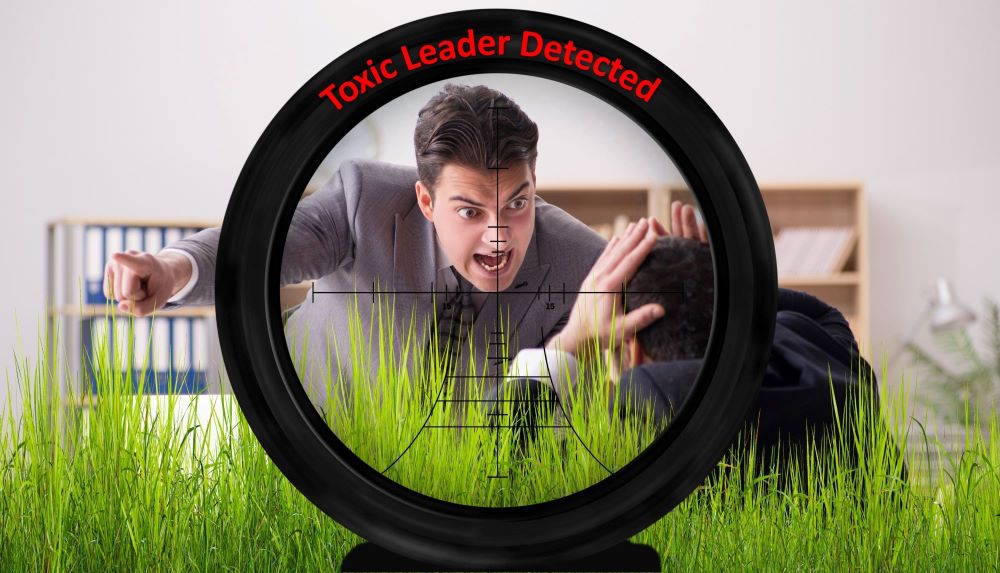We all know that toxic leaders are prevalent in most organizations, regardless of the size and recognize the negative impact they can have on the individuals that work for them, as well as on their peers and other teams they encounter. What if the entire workplace is toxic? Individual toxic leaders can be identified and counselled to improve or move on. What if you find yourself in a toxic work environment? As much as we try to avoid them during a job search, we may inevitably find ourselves in one. This is not the result of a few individuals but stems from an entire workplace culture.
Continue reading “Toxic Workplaces Survival Strategies”THE IMPACT OF TOXIC LEADERS ON YOUR ORGANIZATION
Toxic leaders are like weeds in your garden or lawn. If you don’t remove them right away, they will infest your entire organization resulting in stifled growth, reduced morale and the departure of quality employees.
Toxic leaders are everywhere, whether organizations want to admit it or not. They can be found in organizations with as little as 100 employees or found in multitudes in larger ones. Unfortunately, they are usually ignored and allowed to choke the growth of those around them, namely, their subordinates and their peers. They are usually accepted and described in satisfactory terms such as hard-working, results-driven, or persistent. On the surface, these traits could describe great employees, but when taken to the extreme, they result in negative outcomes, such as abuse, intimidation and manipulation.
Continue reading “THE IMPACT OF TOXIC LEADERS ON YOUR ORGANIZATION”What is the Leadership IMPACT Tool Used by the Elite Leadership Academy?
Learn about how we use our proprietary Leadership IMPACT Assessment to identify individual leadership gaps, teams leadership perception gaps and organization level gaps. When utilized as part of our Leadership Resources Management solution, it helps detect toxic leaders in an organization.
How Can Analytics Help to Identify Toxic Leaders?
Toxic leaders survive in organizations because they’re good at managing up. Therefore, you need a tool that assesses them by their peers, supervisor and direct reports. Analytics helps organizations identify toxic leaders because, if done properly, they are completely anonymous and data-driven. This eliminates potential retaliation that can occur with other types of assessments.
Why 360-Reviews Make it Difficult to Identify Toxic Leaders
Toxic leaders are difficult to find using typical 360-reviews because they are text-based which makes them not completely anonymous. This can lead to retaliation if the reviewer is completely truthful about the leader’s performance. That’s why we provide a quantitative tool to provide completely anonymous feedback to the leader in our LeadershipRMS 360 strategy.
What is Considered a Toxic Leader and How Are They Identified?
Toxic leaders are like weeds in a garden. If allowed to flourish, they will choke the productivity out of others around them.
Weeding Out Toxic Leaders in Your Organization
Toxic leaders are like weeds in your garden or lawn. If you don’t remove them right away, they will infest your entire organization resulting in stifled growth, reduced morale and the departure of quality employees.
Continue reading “Weeding Out Toxic Leaders in Your Organization”Hunting for Toxic Leaders in Your Organization
Radar is used in several aspects of our everyday lives. It works by using electromagnetic sensors to detect, locate, track and recognize objects from a distance. Some common uses include:
- Tracking weather patterns and storms by the weather service
- Tracking and monitoring airplanes by traffic control
- Tracking spacecrafts and other objects by NASA
- Tracking friendly and enemy forces by the military
Tales From the Leadership Front: The Negative Impact of Toxic Leaders
Have you ever worked for a toxic leader? Fortunately for me, I have never been in that situation. I’ve worked for bad or ineffective leaders, but not a toxic one. Toxic leaders disrespect their employees, are abusive, unethical and typically don’t take responsibility when something goes wrong (but will take the credit when things go right).
Continue reading “Tales From the Leadership Front: The Negative Impact of Toxic Leaders”






